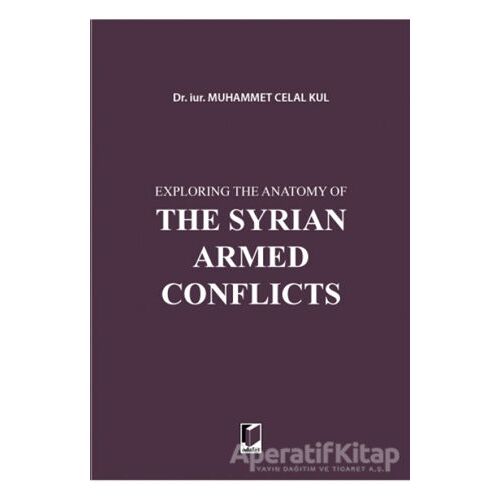Hiç mesaj bulunmadı
| Ödeme Türü | Toplam Tutar |
|---|---|
| Diğer Kredi Kartları | 200.00 TL |
| Havale / Eft | 200.00 TL |
| Posta Çeki | 200.00 TL |
- Vade farksız taksitler KOYU renkte gösterilmektedir.
- X+X şeklinde belritilen taksitler (Örneğin: 2+3) 2 taksit olarak işleme alınmakta ancak ilgili bankanın kampanyası dahilinde 2 taksit üzerinden işlem yapıldığı halde 2+3 yani 5 taksit olarak kartınıza ve ödemenize yansımaktadır. (2 taksit seçilmiş olsa bile banka kampanyası dahilinde ekstradan vade farkı eklenmeden işlem 5 taksite bölünmektedir.)
For more than nine years, Syrian Arab Republic has been home to armed conflicts. The situation in Syria has proven to be severe than a military coup or a bloody regime change. Armed conflicts in Syria has caused many crises including humanitarian and refugee crises. However, this study has been prepared to analyse the legal interplay between the types of armed conflicts between the main contenders of the armed conflicts in Syria. Moreover, Syrian armed conflicts are not finished yet and facts might change faster than one might estimate. Therefore, writing about a developing story or a current affair has not been an easy work. But luckily enough, arguments and analyses used in this study are still valid and up to date.
The focus of this study is the nature and classification of the Syrian armed conflicts (a problematic topic which requires analysis for its various consequences). For the purposes of international humanitarian law, to give an overall picture of Syrian armed conflicts, this paper identifies the main contenders and the conflicts between them. The study has been divided into four parts. International armed conflicts have been discussed in the first part. The second part deals with non-international armed conflicts. In the third part internationalisation of armed conflicts has been analysed. Finally, the last part has been allocated for legal effects of classification of armed conflicts of Syria.
In exploring the nature of the Syrian armed conflicts, different views found under international humanitarian law have been revisited and applied to these conflicts. Moreover, an examination of ISIS (also known as DAESH), the role of third States, namely, Iran, Russia, Turkey and the coalition forces) and non-State actors, such as the Free Syrian Army and People’s Protection Units (YPG) have been considered. Furthermore, the question as to whether the Free Syrian Army or other non-State actors may be regarded as a national liberation movement has been addressed.



